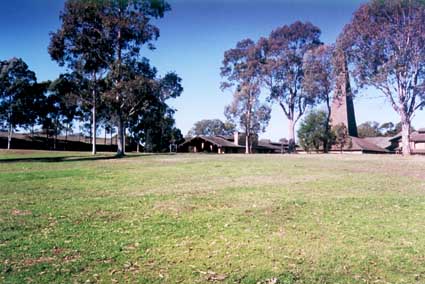Kurosols are also known as a type of podsolic or duplex soil with a definite change between the A and the bleached B horizon.
This profile is taken from the College campus and it demonstrates the compaction and resulting structure loss caused by extensive traffic and mowing in recent years. In the past, heavy grazing and dry times may have contributed to erosion of topsoil from the original profile.
On Tocal we find these:
- are problem soils
- are found on rolling slopes and crests and on old high terraces
- have parent material of weathered sedimentary rocks - sandstone/conglomerate
- support native vegetation of Spotted Gum forest
- can show dramatic increase in productivity with high inputs.

Profile description
- 0cm: A1 horizon. Grey-brown sandy loam. Firm surface soil, poor structure, plant roots common, good drainage, pH 5.3
- 7cm: A2 (gravelly) horizon. Light grey-brown sandy loam. Bleached when dry, gravelly and contains 60% rounded alluvial gravel below 15cm, very poor structure, fair drainage, plant roots common, pH 5.6
- 33cm: A2 (bleached) horizon. Very light grey-brown coarse sand. Bleached when dry, very poor structure, drainage is very poor, plant roots are few, pH 5.6
- 40cm: B horizon. Light yellowish brown and yellow brown medium clay with sand. Horizon is dense and mottled and holds up water, very poor drainage, few plant roots, pH 4.5
- 51cm: B/C horizon. Light yellow brown and reddish brown medium clay with sand. Over hard weather rock, note the strongly weathered sandtone gravel with orange mottles around the rock, very hard when dry, poor drainage, very poor structure, a few plant roots, hard weathered rock at 57cm, pH 4.4.
Tocal newsletter
Want to find out about news, events, courses and publications?

